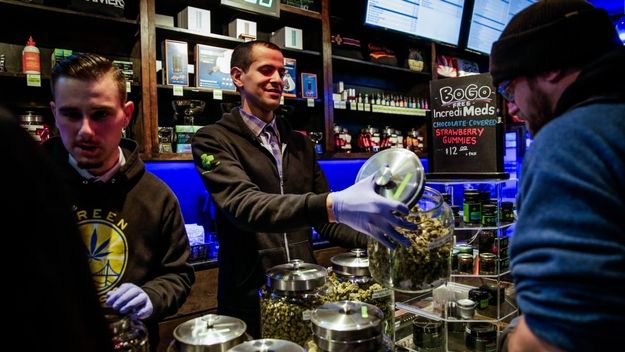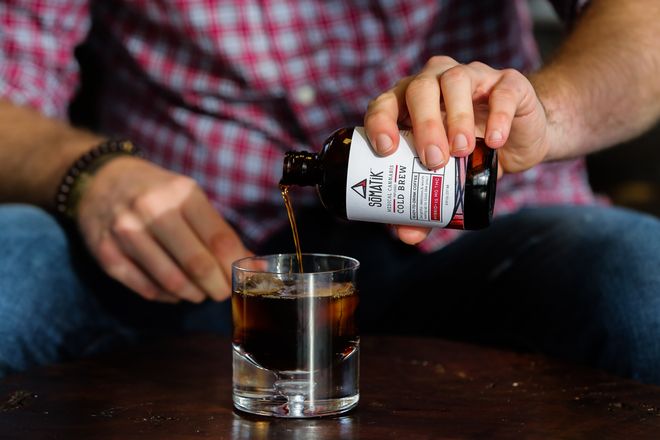Ten highlights and lowlights from California’s new marijuana rules

SACRAMENTO — No more buds displayed in bulk containers and jars. Sayonara, super-potent edibles. Bye-bye, canna-milkshakes. Forget freebies.
On Thursday, California’s Bureau of Cannabis Control released 273 pages of long-awaited temporary emergency rules to govern legal cannabis sales starting Jan. 1.
The historic rules do away with 21 years of laissez-faire medical pot commerce in favor of strict, black and white mandates governing the way cannabis is grown, processed, sold and celebrated in California; the world’s largest cannabis market.
What does it all mean for cannabis consumers? A reduction in the variety of products, services and experiences in California cannabis, but also a higher-quality, more consistent, reputable and safe industry. Here are the top five highlights and lowlights from California’s new marijuana rules, which phase in through 2018.
HIGHLIGHTS
1) Clean Cannabis
California is setting a de facto organic standard for legal cannabis; meaning any plant with more than .1 parts per million of common pesticides will be deemed too dirty to burn and inhale. Testing laboratories must obtain international certifications for accuracy and will be required to measure potency and check for contaminants like heavy metals, mold, and residual solvents like butane in extracts. Regulators will even ensure that your bud is dry enough — meaning it is no more than 12 percent water.
2) Increased Security
A track-and-trace system will record every cannabis plant and batch, from seedling to sale. Retailers must have security guards and 24-hour video surveillance. Marijuana company owners must be background-checked and fingerprinted. To decrease the threat of robbery, retail delivery drivers won’t be able to carry more than $3,000 in product at any one time. Police will deploy minor decoys to bust any retailer selling to those under 21 years of age.
3) Increased Product Safety
All cannabis will be sold in tamper-resistant, resealable, childproof packaging. Edibles won’t be allowed to mimic popular candy like gummy bears and Snickers bars. Edibles potency is capped at a generous 100 milligrams of THC, cannabis’ main active ingredient per package. Individual servings can have a maximum 10 mg THC. Edibles labels must include an ingredients list, nutrition facts, THC content and include a universal symbol issued by the state Department of Public Health.
4) Events Allowed
Legalization in other states severely crimped cannabis gatherings — but not in California. While events will be limited to state-run county fairgrounds, licensed cannabis vendors and smoking will be allowed and events can last up to four days. It’s part of a package of consumer-friendly rules including delivery-only retailers and maximum retail store hours of 6 a.m. to 10 p.m.
5) Environmental Standards
Cannabis farmers will have to comply with extensive water rules, and embrace the renewable energy mandates of their local jurisdictions. Indoor pot farms will be subject to odor control rules. Even cannabis waste is tightly regulated — farmers will need a receipt from a licensed waste management company to compost their trash .
LOWLIGHTS
1) Higher Taxes, Higher Prices
Legal adult-use sales come with taxes of up to 45 percent, including both state and local taxes. In the short term, expect price increases from kinks in the supply chain and the cost of regulatory compliance and a taxation frenzy. In the long term, production efficiencies promise to chop the price of pot by 75 percent.
2) No Freebies
Forget about filling your pockets with the copious freebies from cannabis shops. No more manufacturers’ in-store tables with free product samples. No more free, low-grade joints or low-quality edibles with your first purchase. Same goes for events where the common experience of free dabs is now verboten.
3) No Caffeine, Alcohol, or Dairy Edibles
Extensive edibles rules radically limit the variety of legal edibles for sale. No infused hemp milk (sorry, Chocawaska), and certainly no infused wine (sorry, Melissa Etheridge). No nicotine plus THC and no seafood (sorry, Jetty sushi). However, cannabis-infused butter will be allowed, so long as manufacturers get their butter from a licensed dairy.
4) No ‘Deli’-style Sales
The good old days of sticking your nose into a one-pound container of buds to assess aroma are gone. No more watching the budtender dive into a pound of buds with chopsticks to weigh out your bag. Retailers can only show customers small samples in containers. All grams, eighth-ounces, quarters, halves and full ounces must be sold pre-packaged. Imagine buying organic vegetables in antiseptic Mylar at Whole Foods. Sniff your last jar of buds as soon as you can.
5) Less-Potent Edibles
Medical marijuana patients are howling about limits on the maximum amount of THC in edibles and other adult use products. Stock up on Korova’s 1,000-mg Black Bar if ultra-potent edibles are your jam.
[Correction: A prior version of this story was edited to include a misstatement about bans on edibles with additives. According the rules, “Prohibited additives include, but are not limited to, nicotine and caffeine. This prohibition shall not apply to products containing naturally occurring caffeine, such as coffee, tea, or chocolate.”]

